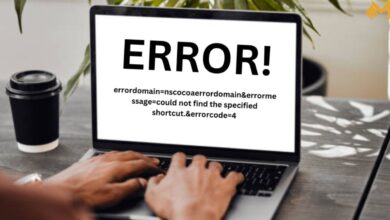
Taking good notes can help you organise information and prepare for exams and assignments. Here are our 8 useful tips to make your note-taking more effective.
Note-taking is an important skill to master. Whether you’re someone who likes to highlight key information in journals, record lectures on your phone or scribble notes down in notepads, you’ll know the value of having good notes when it comes to writing assignments or revising for exams.
Importantly, note-taking is far more than just a way to take down information. Taking good notes can help you:
- organise information
- engage your mind and retain more information
- prepare you for writing well-thought-out arguments in essays
- stay alert – especially useful during long lectures!
While there’s no right or wrong way to take notes, there are some tried and tested techniques. Next time you’re in a lecture or making notes from a journal, give one of these a go.
Do your prep
Whether you’re taking notes in a lecture or from a text, you should schedule in some time beforehand to help you get familiar with the content.
Before you step foot into a lecture hall or seminar room, take a few minutes to consider what it is you’ll be learning about. It can be a good idea to read up on the topic briefly beforehand or get familiar with any required texts.
Not only will this help you get to grips with new terminology, it’ll help you identify the main ideas and concepts to take notes on.
If you’re taking notes from a book, journal, or article, it can help if you skim read the content once before writing anything down. This will help you identify the main points of an argument and structure your thoughts.
Practice active listening
In a lecture or tutorial, one of the best ways to make sure you’re only taking down the notes you need is to practice active listening. By blocking out distractions and focusing on the central themes of the talk, you’ll be able to better concentrate on the material and make sure you’re not aimlessly writing things down.
Be sure to listen out for markers or cues from your lecturer to help guide your notes. You’ll often find they use phrases such as “The important point here is…” to emphasise a point or signal a new topic – which is a useful sign to make a note.
Write in bullet points
Whether you’re taking notes from a lecture or an article, the most important thing is to keep them brief. Try to avoid writing something down word for word. Not only will this save you time, it’ll help quickly refresh your memory when you come to review your notes for an essay or revision.
One of the best ways to keep your notes concise is to write in bullets and phrases instead of complete sentences. This will help you focus on the main concepts and make it easier to pinpoint the information you need afterwards.
Use your own abbreviations
An easy way to help you capture information quickly is to use abbreviations. These work best when you use them sparingly – if every other word is an abbreviation, it might be hard to transcribe them later on! Think about long or complex words that might be used regularly. For example, if you’re in a lecture on 17th century history, you might want to shorten the phrase ‘Industrial Revolution’ to just ‘IR’. Just be careful to make a note of what your abbreviations are or write up fuller notes while everything is still fresh!
Make a note if you miss something important
We all lose concentration in lectures now and again, and so it’s natural to miss the odd important phrase. Don’t let it throw you off your note-taking – rather than rushing to write something down and missing later points, simply leave a short note to remind yourself (a symbol such as a big asterisk, circle or even a question mark will do!). Just make sure it’s something that will prompt you to ask the speaker a question or follow up with one of your peers afterwards.
Try some of the new reading tools
With millions of new research articles being published every year, it’s not surprising that many students find it difficult to keep up with reading the latest publications in their field. AI-powered research summarisers such as Scholarcy are growing in popularity, thanks to their ability to extract the most significant points from articles, book chapters and reports.
These article summarizers work by scanning the content and condensing it into bite-sized chunks. Some like Scholarcy are even able to extract tables, figures, and references from academic texts, helping you get to grips with, and analyse, a piece of research more easily. Notes can be added to summaries by the reader making recall easier when it comes to revising.
Use the Cornell method
We tend to lose almost 40% of new information – whether we’ve heard or read it – within the first 24 hours.(1)
That’s why effective note-taking is a two-step process: first, take the notes; then revisit them. By reviewing your notes, condensing them further and testing your understanding of them, you’re more likely to commit the information to memory.
Devised in the 1950s, the Cornell method is an effective way for students to take, organise and review their notes. Rather than treating note-taking as a one-off activity, it encourages students to view their notes as a learning resource.
To try the Cornell method yourself, you’ll need to divide your page into three sections. Leave a wide margin on the left and a section at the bottom of the page. The rest of the page is where you’ll write your notes.
Following your lecture, tutorial or reading, you should return to the page and write a cue word in the left margin to help prompt your memory. You can even put a piece of paper over the note-taking area so you can just see the margin – run through these to test yourself and check you’ve remembered all the key points from your notes.
In the section at the bottom, you should write a short summary of what the page contains. This will help you later when you’re flicking through notes to find a particular piece of information for an assignment or revision.
Try the charting method
If you’re taking notes from a lecture or text that has a lot of comparative facts, the charting method can be a useful note-taking method. As the name suggests, this method uses charts to structure your notes and keep them concise – it also helps you compare different topics and ideas more easily.
To set up your chart, simply split your document into columns and rows. It can sometimes be easier to create the chart when you’re taking notes from a book or journal, as you’ll be able to spend a few minutes planning what it will look like. However, if you’re in a lecture that’s covering the advantages and disadvantages of particular methods, this can be a quick chart to create in the lecture hall.
Final thoughts: taking useful notes
These top tips show that note-taking is an art – but one that’s well worth getting right. Of course, different techniques will work for different people, so it’s worth experimenting with them all until you find what helps you.
References
Mehta, K and Pitchers, R (2018) The significance of effective note-taking. London School of Science and Technology Staff Blog. 8th June. Available at https://www.lsst.ac/blogs/the-significance-of-effective-note-taking [Accessed 11 February]







